Drawing is a valuable skill for beginners as it unlocks a world of creativity and self-expression. It offers a unique way to communicate thoughts, emotions, and ideas visually. For beginners, drawing serves as a foundation for more advanced art techniques. It also fosters patience, observation, and problem-solving abilities. Beyond its artistic aspects, drawing brings joy and a sense of accomplishment. Whether for personal enjoyment or professional aspirations, embracing drawing as a beginner is the first step towards an enriching and fulfilling artistic journey.
Starting with easy drawing ideas offers numerous benefits for beginners. It allows them to build a strong foundation and gain confidence in their artistic skills. Easy drawings enable beginners to focus on learning techniques and developing their creativity without feeling overwhelmed. As they master simple concepts, beginners can gradually progress to more complex subjects. This approach fosters a sense of accomplishment and encourages them to explore their artistic potential further. Embracing easy drawing ideas is the perfect stepping stone for beginners to unlock their creativity and embark on an exciting artistic journey.
You may also read – vector line drawing
Supplies to Gather Before Drawing
- Drawing Paper or Sketchbook: Consider the weight and texture of the paper, as they can affect the final result of your artwork. Sketchbooks are great for practicing and keeping all your drawings in one place, while individual sheets of drawing paper offer more versatility.
- Pencils: Pencils are the primary tool for drawing, and having a range of grades is essential. H (hard) pencils are ideal for light and precise lines, while B (soft) pencils are great for darker and softer lines. The HB pencil is a good all-around choice for general sketching.
- Eraser: An eraser is an indispensable tool for any artist. It allows you to correct mistakes and refine your drawings without leaving smudges or marks.
- Sharpener: Keeping your pencils sharp is essential for achieving fine details and accurate lines. Invest in a good quality sharpener to maintain the sharpness of your pencils.
- Ruler: A ruler is handy for creating straight lines, especially in technical drawings or architectural sketches.
- Drawing Compass: If you plan to draw circles or arcs, a drawing compass is a must-have tool. It allows you to create precise and symmetrical shapes.
- Drawing Pens: Adding drawing pens to your arsenal can enhance the details and definition in your artwork. They come in various tip sizes, allowing you to experiment with line thickness.
- Colored Pencils or Markers: If you want to explore adding colors to your drawings, colored pencils or markers are excellent choices. They bring vibrancy and depth to your artwork.
- Blending Stump or Tortillon: These tools are used for blending and smoothing pencil marks, creating gradients and softening edges. They are particularly useful in creating realistic textures and shading.
- Fixative Spray (Optional): If you work with graphite or charcoal, a fixative spray can help protect your finished drawings from smudging and preserve them for the long term.
50 Easiest Drawing Ideas for Beginners
The collection of 50 easiest drawing ideas for beginners offers a variety of simple and fun subjects to practice drawing. These beginner-friendly drawing ideas are sure to inspire and encourage your artistic journey.
Simple Shapes
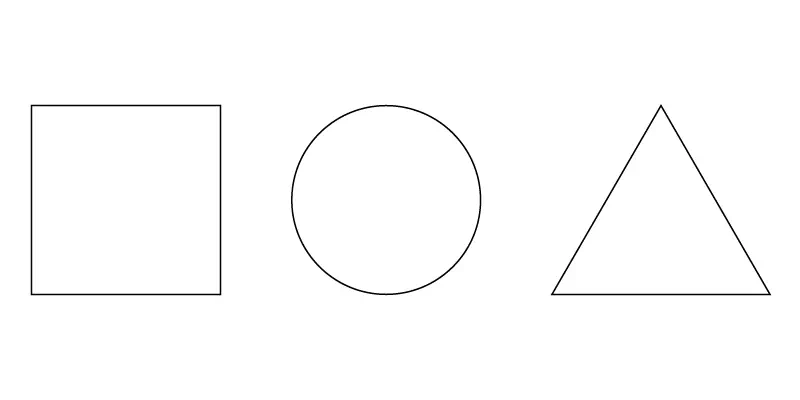
Start you drawing with the simple shapes, such as, Circles, squares, triangles and rectangles. Practice drawing these shapes freehand to improve your accuracy and control. They lay the foundation for more advanced drawings and help develop your eye for proportions and composition.
Doodles

Doodles are spontaneous drawings that emerge from the mind without pre-planning or specific intention. They are a perfect starting point for beginners. Doodling allows individuals to unleash their creativity, relieve stress and explore their imagination. It can be a meditative practice that helps improve focus and concentration. For beginners, doodling is an accessible way to build confidence in drawing, as there are no rules or expectations.
Flowers
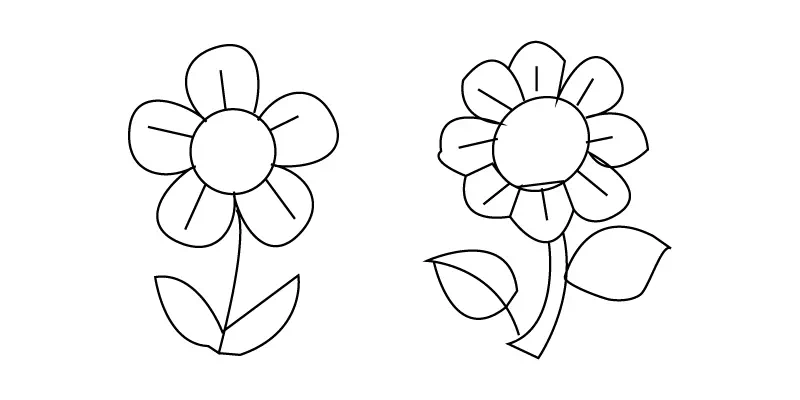
Drawing flowers is a delightful way to express beauty and nature in your artwork. Start by sketching simple flower shapes like circles or ovals for petals and a central circle for the flower’s core. Add lines to define stems and leaves. Flowers are a popular subject for beginners as they offer endless possibilities for creativity. It allows you to practice different drawing techniques. So, pick up your pencils and let your imagination bloom with a garden of lovely floral sketches.
You may also read- flower-drawings
Fruits
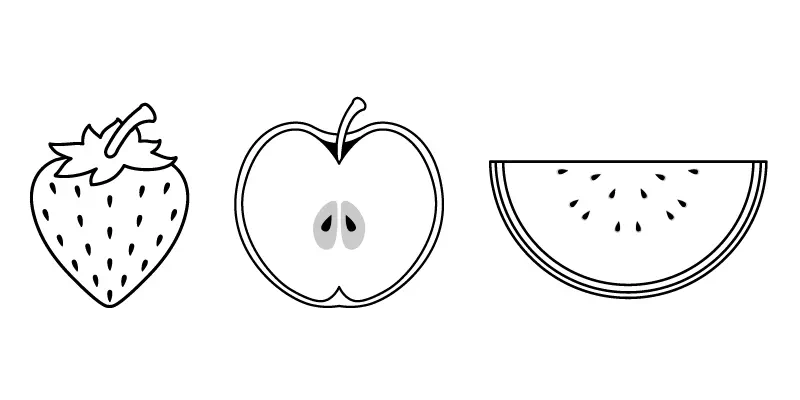
Fruits offer a juicy and delicious inspiration for artists. To draw fruits, start by observing their basic shapes and contours. Sketching simple ovals or circles for common fruits like apples, oranges or bananas can be a great way to begin. Pay attention to the texture and details of each fruit, such as the bumps on a strawberry or the segments of an orange. Experiment with shading and coloring to add depth and realism to your drawings.
Cupcakes

Cupcakes are delightful subjects for beginner artists to practice their drawing skills. Their simple yet charming shape makes them a great choice to develop basic techniques like shading, proportion, and texture. Drawing cupcakes can also be a fun way to experiment with various colors and designs, adding a touch of creativity to each confection.
Clouds

Clouds are a mesmerizing and versatile subject for beginners to draw. Their soft and billowy forms can be easily sketched using simple shapes, such as circles or ovals. Whether you’re depicting a fluffy cumulus cloud on a sunny day, drawing clouds offers an opportunity to experiment with shading and texture.
Stars
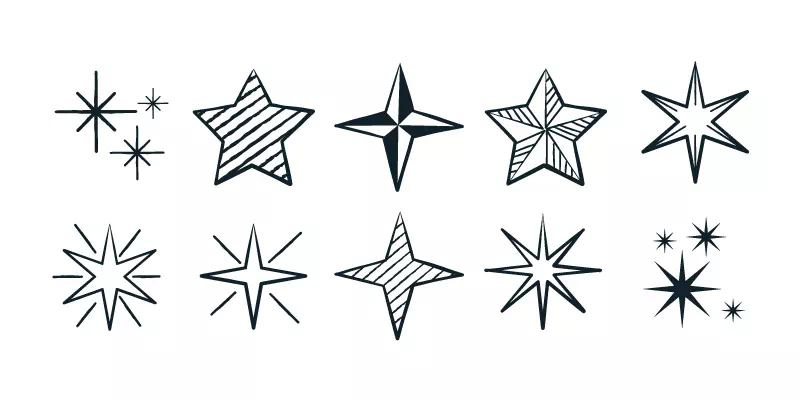
Stars are not only simple to draw but also offer endless opportunities to experiment with different sizes and arrangements. Whether you want to draw a single shining star or a constellation, practicing drawing stars will help you develop control over your pen or pencil.
Leaves
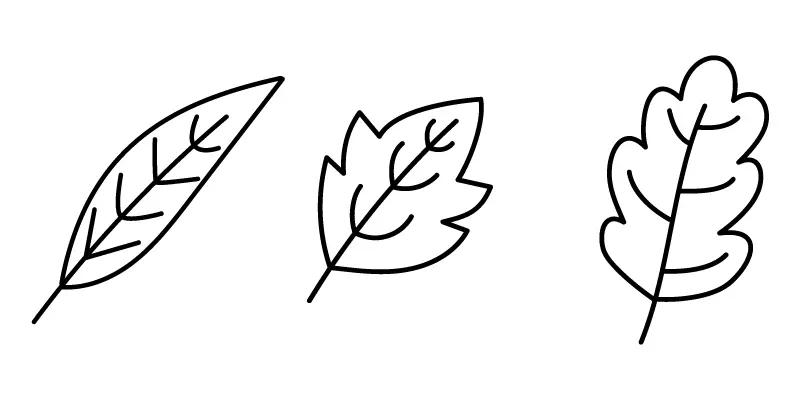
Drawing leaves can be a fantastic way for beginners to connect with nature through art. Start by observing different leaf shapes and structures to capture their unique characteristics on paper. It allows you to hone your artistic skills while celebrating the beauty of the natural world. So, grab your sketchbook, head outdoors, and let the leaves inspire your creativity!
Trees

Drawing trees can be a delightful experience for beginners. Start with a simple trunk and branches, then add various leaf shapes and textures to create a lush canopy. Experiment with different tree species and seasons to explore the beauty of nature through your sketches. With practice, you’ll be able to depict the serenity and elegance of trees with ease and creativity. Happy drawing!
Sun and Moon

Drawing the sun and moon can be a wonderful way to explore celestial elements in your artwork. For the sun, begin with a bright, circular shape and add rays radiating outward to portray its warmth and energy. For the moon, draw a crescent or full circle and incorporate shading to capture its gentle glow. Play with colors and backgrounds to set the mood for day or night scenes.
Houses

Drawing houses can be a delightful exercise in architectural creativity. Start with a simple rectangular shape as the base and add details like windows, doors and chimneys to bring it to life. Experiment with various styles, from cozy cottages to modern urban dwellings.
Cars

Drawing cars can be an exciting challenge for beginners. Begin by sketching the basic outline of the car’s body and wheels. Add details like headlights, windows, and doors to give it depth and personality. Explore different car models, from sleek sports cars to classic vintage automobiles, and experiment with various color combinations.
Mountains
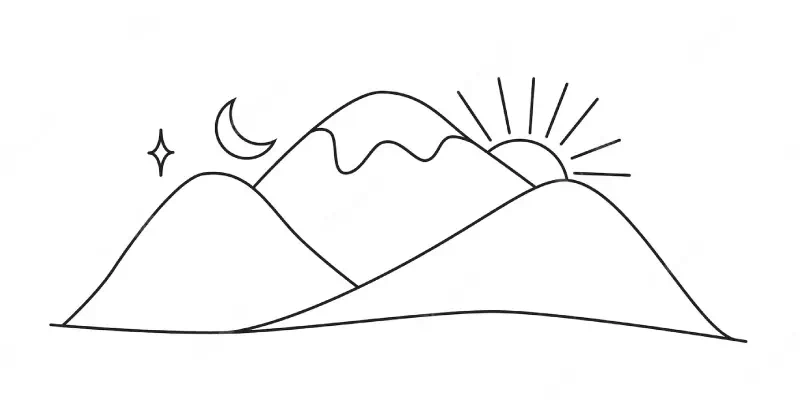
Drawing mountains can be a rewarding experience for beginners. Start by sketching the outline of the mountain range, paying attention to the different peaks and slopes. Use shading techniques to create depth and texture, emphasizing the play of light and shadow.
Waves

Begin by sketching the horizon line and the basic outline of the wave. Pay attention to the flow and movement of the water, adding curving lines to depict the motion. Use shading to create depth and dimension, making the waves appear more realistic.
Ice Cream

Drawing ice cream is a delightful and straightforward exercise for beginners. Start by sketching the cone’s basic shape and then add the scoops of ice cream on top. Pay attention to the curves and details of the scoops, making them look tasty and inviting. Use shading to add dimension and depth to the ice cream and cone.
Balloons
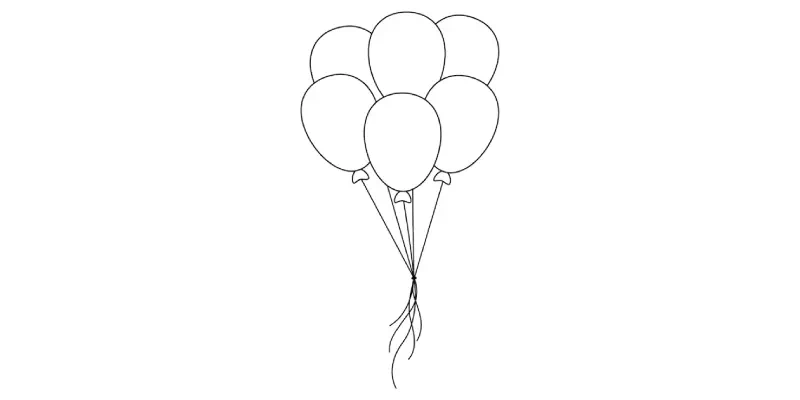
Drawing balloons can be a fun and colorful experience for beginners. Begin by sketching the balloon’s oval shape and then add the balloon’s neck and string. You can get creative with various patterns and colors to make each balloon unique.
Hearts
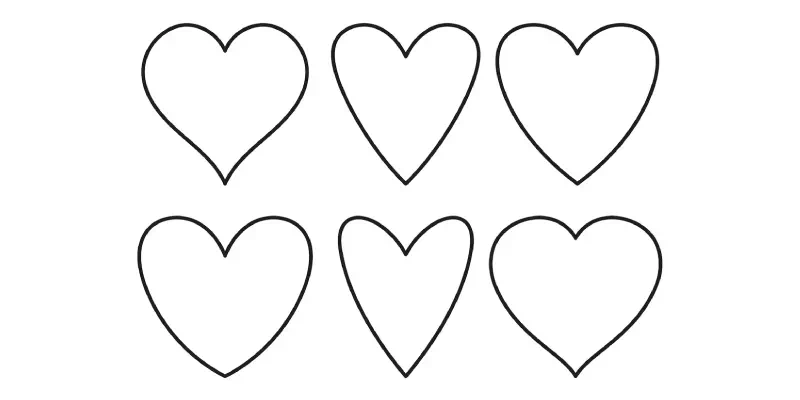
Drawing hearts is a perfect starting point for beginners as they are simple and universally recognizable symbols of love and affection. Begin by drawing two overlapping circles, creating the top halves of the heart shape. Connect the circles’ bottoms with a smooth curve to complete the heart outline.
Umbrellas
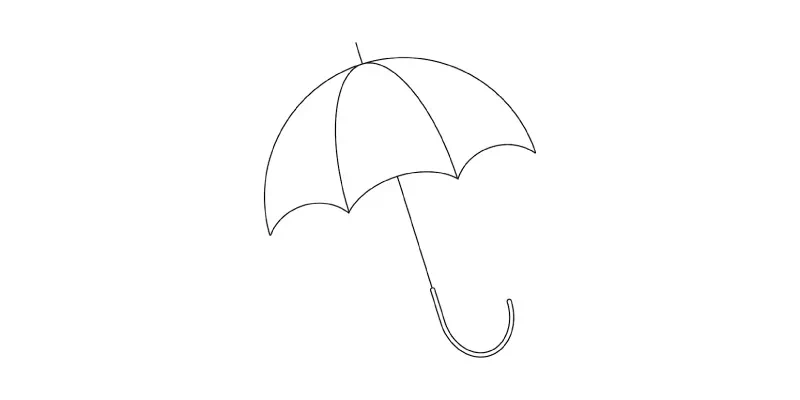
Start by drawing a simple curved line to represent the handle. Then, draw a semi-circle shape above the handle to create the canopy of the umbrella. Add some straight lines or curves extending from the canopy to form the ribs. Finish off with a few small circles or dots for the raindrops and you’ve created a charming umbrella illustration.
Houses
Add a triangular roof on top and then draw doors and windows to bring the house to life. Feel free to add details like chimneys, plants or even a picket fence. Experiment with various colors and architectural styles to make your houses unique and captivating in your illustrations.
Cacti

Start by drawing the basic shape of the cactus, which is usually elongated and cylindrical. Add thorns by drawing small, sharp lines along the sides. Cacti come in various shapes and sizes, so feel free to get creative with your designs. You can draw a single cactus or create a whole desert landscape with multiple cacti. Use shades of green for the cactus body and a sandy color for the desert ground to add depth to your drawing. Happy sketching!
Feathers
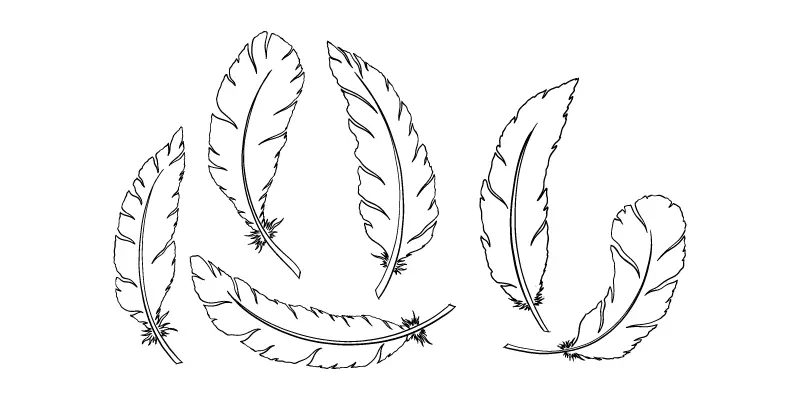
Drawing feathers can be an enjoyable and relaxing experience. Start by lightly sketching the general shape of the feather using gentle, flowing lines. Feathers often have a central shaft with smaller branches, called barbs, extending from it. Pay attention to the feather’s texture, as the barbs may have tiny filaments called barbules.
Shoes
Consider the toe, sole and heel in sketching the basic shape of the shoe. Pay attention to the details, such as laces, buckles or straps, which add character to the shoe. Experiment with different angles and perspectives to capture the shoe’s form accurately.
Coffee Cups
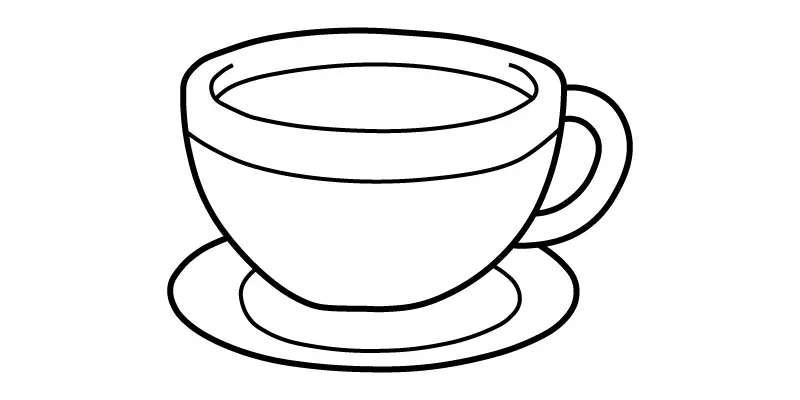
First of all create the outline of the basic shape of the cup, considering the handle and any unique details. Add subtle lines to represent the rim and bottom of the cup, and don’t forget to sketch the steam rising from the coffee. Experiment with various styles and patterns to make your coffee cups more appealing.
Sailboats
Start by sketching the basic shape of the boat and adding a sail on top. Pay attention to the lines and angles to give the boat a realistic look. Add small details like windows, ropes and a flag to enhance the drawing. Whether you imagine it gliding on calm waters or catching a strong breeze, drawing sailboats allows you to explore the beauty of the sea and the art of sailing.
Rainbows

Sketch an arch shape with pencil. Use a variety of vibrant colors to fill in the rainbow, making sure to blend the colors smoothly. You can use colored pencils, markers or watercolors to create your rainbow. Add fluffy clouds at the ends of the rainbow to complete the picture. Drawing rainbows allows you to play with colors and create a joyful and enchanting artwork that will surely brighten anyone’s day.
Bubbles
For the beginners drawing bubbles is one kind of fun. Start by sketching circles of various sizes using a pencil. Then, add a thin outline to the circles to make them look more like bubbles. Fill in the circles with a light shade of blue or white to represent the reflection of light on the surface of the bubbles. To enhance the effect, add small highlights using a white gel pen or white colored pencil.
Hot Air Balloons

Begin by sketching a large oval shape for the balloon and add a small basket below it. Draw a thin line to represent the ropes connecting the basket to the balloon. Use bright colors for the balloon and experiment with various patterns and designs. To complete the scene, add fluffy clouds in the background and a sun or blue sky.
Mountains and Sunsets
Drawing mountains and sunsets can be a meditative and rewarding experience. Start by sketching the outline of majestic mountains, with jagged peaks and sloping slopes. Then, create a warm, glowing sunset sky with shades of pink, orange and purple blending into each other. Don’t forget to include the setting sun with its rays spreading across the horizon.
Ice Cream Cones
Try to sketch the cone first, adding details like the waffle texture. Then, draw the scoops of ice cream on top, choosing your favorite flavors or mixing them up for a playful touch. Don’t forget to add a cherry on top or a drizzle of chocolate syrup for extra charm.
Sea Shells
Drawing sea shells can be a fascinating exploration of intricate patterns and textures. Start by sketching the basic shape of the shell, and then add the unique ridges and curves that make each one distinct. Pay attention to the fine details and shading to create a lifelike effect. Experiment with different types of shells, from conch to scallop, to challenge your artistic skills. Whether you’re drawing them in monochrome or adding a burst of color, sea shells offer a wonderful subject to ignite your creativity and bring a piece of the ocean into your artwork.
Trees in Seasons
There are different trees in different seasons. So, make the basic structure of the trees. Then add leaves or blossoms to represent each season. In spring, paint or draw vibrant green leaves bursting forth. In summer, showcase lush foliage. For autumn, use warm shades like red, orange and yellow to depict falling leaves. Winter offers a chance to sketch bare branches or snow-covered trees.
Stars and Moon
For stars, use tiny dots or various-sized circles to create a celestial effect. To enhance the beauty, consider blending dark and light shades to add depth and dimension. Sketch the crescent or full moon with simple curves and add fine lines for craters and details.
Patterns
Select a basic shape or motif, such as flowers, leaves or geometric designs. Repeating the chosen pattern across the paper adds rhythm and harmony to the artwork. Experiment with various colors, sizes, and angles to create unique and eye-catching patterns. The process of drawing patterns can be both meditative and exciting. It allows beginners to develop their artistic skills while enjoying the artistic journey.
Cup of Tea
A cozy cup of tea can be a delightful experience for beginners. Start by sketching the outline of the cup and handle. Add details like steam rising from the tea, teabag strings and a saucer. You can also draw accompanying elements like a plate of cookies or a book to create a relaxing scene. Enjoy the process of bringing this comforting beverage to life on paper with your artistic touch.
Hearts and Arrows
Drawing hearts and arrows can be a fun and expressive exercise for beginners. Begin by sketching the heart shape, ensuring both halves are symmetrical. Add an arrow by drawing a straight line through the center of the heart and extending it beyond the top. Create a tail at the end of the arrow, giving it a feathered appearance.
Potted Plants
Potted plants are a wonderful addition to any space, whether it’s a home, office or outdoor garden. These small and portable plants come in a variety of shapes, sizes and species, allowing you to create a mini garden that reflects your personal style. Potted plants not only add a touch of greenery to your surroundings but also promote a sense of relaxation and well-being.
Kites
Kites are symbols of joy and freedom, captivating both children and adults with their colorful presence in the sky. Drawing kites can be a delightful experience for beginners, as they offer a simple yet enjoyable subject to explore. From diamond-shaped kites to intricate designs, these airborne wonders provide ample room for creative expression.
Raindrops
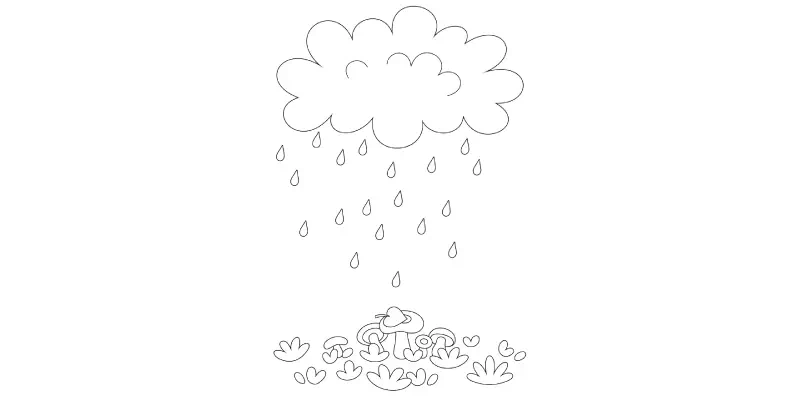
Raindrops are a fascinating subject to draw, offering a chance to capture the essence of rain’s beauty. As they descend from the sky, each raindrop presents a unique shape and pattern. Through practicing the art of drawing raindrops, beginners can refine their skills and add a touch of realism and tranquility to their artwork.
Ice Cream Sundae
Ice cream sundae combines fun shapes and vibrant colors. With a scoop of creamy ice cream, topped with whipped cream, sprinkles and a cherry on top, this sweet treat brings joy to any paper canvas. Exploring various textures and shades while sketching the sundae will enhance your artistic skills and ignite a craving for creativity.
Pencils
Drawing pencils may seem simple, but they are a wonderful subject for beginners to practice shading, texture and perspective. By sketching the pencil, these everyday tools can transform into an artful expression. Explore different techniques and styles with pencils.
Pineapples
Pineapples, with their distinctive shape and texture, offer a delightful challenge for budding artists. The spiky crown and textured skin make for an interesting subject to practice shading and capturing intricate details. Whether drawing a whole pineapple or focusing on a slice, this tropical fruit allows artists to experiment with different techniques and add a splash of vibrant colors.
Sunglasses
Drawing sunglasses can be both stylish and fun. Their various shapes and reflective lenses provide an opportunity to practice perspective and shading. Whether drawing aviators or cat-eye frames, mastering the curves and reflections in sunglasses can elevate your drawing skills and add a touch of coolness to your artwork. Experiment with different angles and lens tints to create fashionable and eye-catching illustrations.
Ice Cubes
Ice cubes allows you to explore the play of light and shadow. The transparent nature of ice makes it an exciting subject to practice rendering reflections and refractions. Capturing the subtle irregularities and edges of ice cubes can also enhance your understanding of form and texture. Experiment with different pencil strokes and shading techniques to create the illusion of cold, glistening ice cubes in your artwork.
Apples in a Basket
The varying sizes and colors of the apples provide opportunities to practice shading and blending to add dimension. Focus on capturing the unique texture of each apple and the interplay of light and shadows on the fruit and the basket. This subject is perfect for experimenting with different drawing techniques to create a charming and realistic composition.
Candles
Drawing candles can be a wonderful way to practice capturing light and shadow. Pay attention to the subtle variations in the flame’s glow. Experiment with different textures and shading techniques to make the candles look realistic and create a cozy and atmospheric drawing. Don’t forget to add any decorative elements or candleholders to enhance the overall composition.
Lollipops
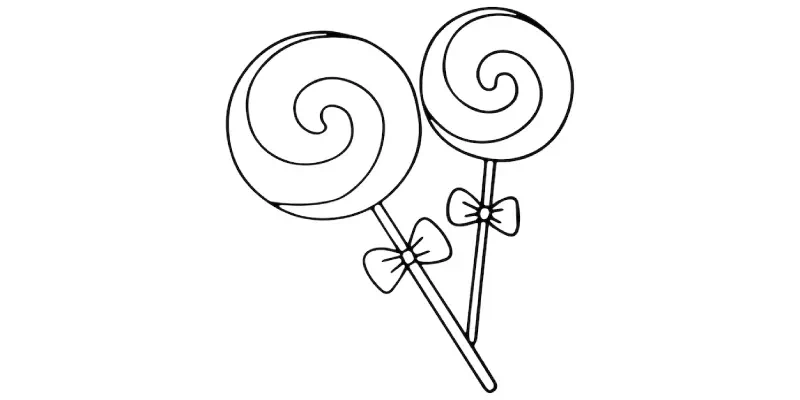
Pay attention to the roundness of the lollipop and the intricate details of the candy swirl. Add highlights and shadows to make the lollipops look three-dimensional and visually appealing. Don’t hesitate to get creative with different flavors and patterns to make your drawings pop with sweetness and joy.
Vintage Cameras
Drawing vintage cameras can be a nostalgic and artistic experience. Pay attention to the intricate details of the camera body, lens and knobs. Don’t forget to capture the charm of vintage aesthetics in your artwork. Whether you love photography or simply appreciate vintage items, drawing vintage cameras allows you to blend creativity with a touch of history.
Clocks
Pay attention to the intricate details of the clock face, hands and numbers. Use shading and highlights to add dimension and realism. Incorporate your own creative style into the clock design to make it unique. Drawing clocks is not only a great exercise in precision and patience but also a timeless subject that represents the passing of time and the art of capturing moments.
Umbrellas
Start with a simple outline of the umbrella’s shape, then add the handle and details like the fabric folds. Experiment with different colors and patterns to make your umbrella design unique. You can also explore using different drawing techniques, such as watercolors or pastels, to create a beautiful and vibrant umbrella scene.
Watermelon Slices
Watermelon slices are a delightful subject for drawing, capturing the refreshing and juicy essence of this favorite summer fruit. With their vibrant pink and green colors, they offer a fun opportunity to play with shading and texture. Whether you choose to depict a single slice or a whole juicy watermelon, exploring the curves and patterns of this iconic fruit can be a delightful and enjoyable exercise for beginners and experienced artists alike.
Tips for Improving Drawing Skills
Improvement of drawing skills depends on several important habits. Some tips for improving drawing skills are given bellow:
- Practice Regularly: Set aside time each day or week to draw. The more you practice, the better you’ll become.
- Study Anatomy and Proportions: Understanding the human anatomy and proportions will improve your figure drawings.
- Observe and Sketch from Life: Drawing from real-life objects and scenes helps improve accuracy and observation skills.
- Use Reference Images: Utilize reference images to learn and experiment with different subjects and styles.
- Experiment with Different Mediums: Explore various art mediums like pencils, charcoal, watercolors, etc., to find your preferred style.
- Take Online Courses or Workshops: Participate in art courses or workshops to learn new techniques and get professional guidance.
- Seek Feedback: Share your work with others and seek constructive feedback to identify areas for improvement.
- Embrace Mistakes: Don’t be afraid to make mistakes; they are part of the learning process.
- Break Down Complex Drawings: Start with basic shapes and gradually add details to tackle complex drawings more easily.
- Stay Inspired: Explore the works of other artists, follow art blogs, and attend art events to stay inspired and motivated.
Conclusion
In this guide, we explored a variety of easy drawing ideas for beginners. These ideas are designed to build confidence and improve your drawing skills. Remember to gather your basic drawing supplies before starting your creative journey. Whether you’re drawing stars in the night sky or delicate flowers in a garden, don’t forget to have fun and let your creativity flow. With practice and dedication, you’ll be amazed at how quickly you can progress and create impressive artworks.
Art is a journey of self-discovery and growth, where creativity knows no bounds. By continuously challenging oneself, artists can unlock their full potential. So, embrace the joy of creation, stay curious and let your artistic talents flourish.
Related blogs
how to create a line drawing in photoshop
hanging plant drawing ideas every artists should-know









